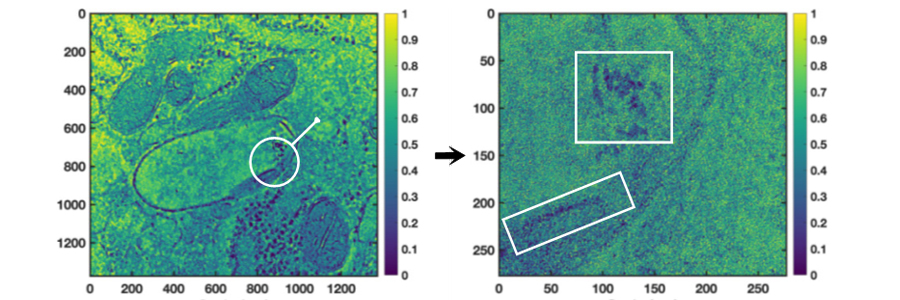Carbon- and metal-rich pollution particles have been found in the placentas of fifteen women in London, according to new research.
The study, funded by Barts Charity and published in the journal Science of The Total Environment, demonstrates that inhaled particulate matter from air pollution can move from the lungs to distant organs, and that it is taken up by certain cells in the human placenta, and potentially target the foetus.
The research team, which includes Lancaster University's Professor Barbara Maher and Dr Vassil Karloukovski, says further work is needed to fully define the direct impacts that pollution particles may have on the developing foetus.
Lead author Professor Jonathan Grigg from Queen Mary University of London said: "Our study for the first time shows that inhaled carbon particulate matter air pollution, travels in the blood stream, and is taken up by important cells in the placenta. We hope that this information will encourage policy makers to reduce road traffic emissions in this post lock down period."
Professor Maher, who analysed the elemental and magnetic content of the particles, said: "Our work has shown that potentially toxic, metal-rich nanoparticles from air pollution can be transported to the brain, the heart, and, now, the placenta. It's highly unlikely that such particles, having gained access to the placenta, wouldn't affect the foetus. It's essential that exposure to particulate air pollution - especially to ultrafine pollution particles like these - is reduced, and urgently."

Carbon- and metal- bearing air pollution nanoparticles in human placental cells, revealed by electron microscopy
Dr Norrice Liu from Queen Mary University of London added: "Pollution levels in London often exceed annual limits and we know that there is a link between maternal exposure to high pollution levels and problems with the foetus, including risk of low birthweight. However, until now we had limited insight into how that might occur in the body."
Placentas from fifteen consenting healthy women were donated to the study following the birth of their children at The Royal London Hospital. Pollution exposure was determined in 13 of the women, all of whom had exposure above the annual mean WHO limit for particulate matter. The cells in the placentas were analysed using a range of techniques including light and electron microscopy, x-rays and magnetic analyses.
Black particles that closely resembled particulate matter from pollution were found in placental cells from all fifteen women and these appeared in an average of 1 per cent of the cells which were analysed.
The majority of particles found in the placental cells were carbon-based, but researchers also found trace amounts of metals including silicon, phosphorus, calcium, iron and chromium, and more rarely, titanium, cobalt, zinc and cerium.
Analysis of these nanoparticles strongly suggests that they predominantly originated from traffic-related sources. Many of these metals are associated with fossil fuel combustion, arising from fuel and oil additives, and vehicle brake-wear.
Dr Lisa Miyashita from Queen Mary University of London said: "We have thought for a while that maternal inhalation could potentially result in pollution particles travelling to the placenta once inhaled. However, there are many defence mechanisms in the lung that prevent foreign particles from travelling elsewhere, so it was surprising to identify these particles in the placental cells from all 15 of our participants."
Fiona Miller Smith, Chief Executive of Barts Charity said: "This is an incredibly important study and immensely relevant to mums-to-be in our local community, indeed in any urban community anywhere in the world.
"In the current climate it can be hard to see beyond COVID and so we are particularly proud to have funded this vital work and truly hope that it will lead to greater awareness of the risks of pollution to the unborn child."
The study involved researchers from University of Lancaster, Barts Health NHS Trust, University of Manchester, Central Manchester University Hospital NHS Foundation Trust, King's College London, University of Birmingham, University of Oxford and University of Leeds.
The research paper 'Evidence for the presence of air pollution nanoparticles in placental tissue cells'. Norrice M.Liu, Lisa Miyashita, Barbara A.Maher, Graham McPhail, Carolyn J.P.Jones, Benjamin Barratt, ShakilaThangaratinam, Vassil Karloukovski, Imad A.Ahmed, Zabeada Aslam, JonathanGrigg. Science of The Total Environment. DOI 10.1016/j.scitotenv.2020.142235 is available here: https://www.sciencedirect.com/science/article/abs/pii/S0048969720357648?via%3Dihub






